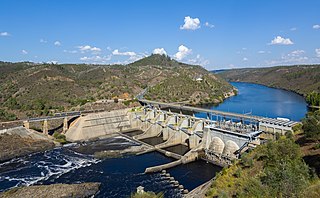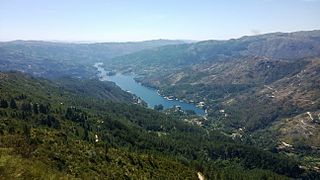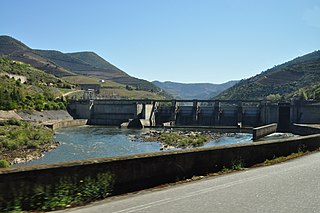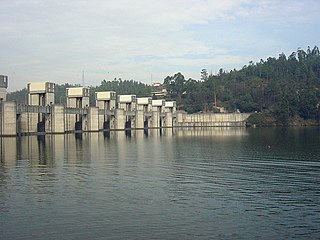| Santa Luzia Dam | |
|---|---|
Santa Luzia Dam | |
| Official name | Barragem de Santa Luzia |
| Location | municipality Pampilhosa da Serra, Coimbra District, Portugal |
| Coordinates | 40°5′23.2″N7°51′28.8″W / 40.089778°N 7.858000°W Coordinates: 40°5′23.2″N7°51′28.8″W / 40.089778°N 7.858000°W |
| Status | Operational |
| Construction began | 1930 |
| Opening date | 1942 |
| Dam and spillways | |
| Type of dam | Concrete arch dam |
| Impounds | Unhais |
| Height | 76 metres (249 ft) |
| Length | 115 metres (377 ft) |
| Width (crest) | 2.5 metres (8 ft 2 in) |
| Dam volume | 80,000 m3 (2,800,000 cu ft) |
| Reservoir | |
| Creates | Santa Luzia Reservoir |
| Total capacity | 53,700,000 m3 (1.90×109 cu ft) |
| Surface area | 2.46 km2 (0.95 sq mi) |
| Power Station | |
| Commission date | 1942 |
| Turbines | 4 x 8 MW Pelton-type |
| Installed capacity | 32 MW |
| Annual generation | 55 GWh |
| Wikimedia Commons has media related to Santa Luzia Dam . |
Santa Luzia Dam (Portuguese: Barragem de Santa Luzia) is a concrete arch dam on the Unhais, a northern tributary of the Zêzere River, located in the municipality Pampilhosa da Serra, in Coimbra District, Portugal. The dam was constructed between 1930 and 1942 [1] and was designed by André Coyne. [2]

Concrete, usually Portland cement concrete, is a composite material composed of fine and coarse aggregate bonded together with a fluid cement that hardens over time—most frequently a lime-based cement binder, such as Portland cement, but sometimes with other hydraulic cements, such as a calcium aluminate cement. It is distinguished from other, non-cementitious types of concrete all binding some form of aggregate together, including asphalt concrete with a bitumen binder, which is frequently used for road surfaces, and polymer concretes that use polymers as a binder.

An arch dam is a concrete dam that is curved upstream in plan. The arch dam is designed so that the force of the water against it, known as hydrostatic pressure, presses against the arch, compressing and strengthening the structure as it pushes into its foundation or abutments. An arch dam is most suitable for narrow canyons or gorges with steep walls of stable rock to support the structure and stresses. Since they are thinner than any other dam type, they require much less construction material, making them economical and practical in remote areas.
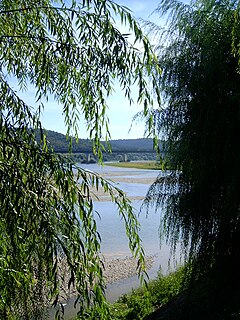
The Zêzere is a river in Portugal, tributary to the Tagus. It rises in the Serra da Estrela, near the Torre, the highest point of continental Portugal. The Zêzere runs through the town Manteigas, runs through Belmonte, passes south of the city Covilhã and east of the town of Pedrogão Grande. It flows into the Tagus in Constância. It is the second longest river in Portugal. Its slope allows for the hydroelectric powerplants of Cabril, Bouçã and Castelo de Bode.














